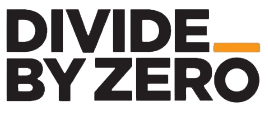Overview on Indian Prosthetics Market
As per surveys conducted, over a quarter of a million Indians break a bone and seek orthopedic medication annually. Coupled with this, reports also put light into the fact that cases for fractured bones and osteoarthritis in India may shoot to 60 million by 2025. In comparison to western counterparts, Indians are more prone to fractures at their early ages which have caught serious attention in the healthcare industry. Consequently, the dire need for technological advancements in medical science multiplies exponentially each year. Also, the Indian dynamic prosthetic device market is worth over USD 450 million growing at a rapid pace of 30% per annum to reach USD 3Bn shortly. Coupled with rapid prototyping and online 3d modeling, 3d printed cast have deeply penetrated the overall medical industry in India and the world at large. Divide By Zero took measures to solve various fractured bone problems emanating from the age-old traditional methods of cloaking the bone injuries using POP or plaster.
Case Study on 3D Printed Cast
Orthopedic casts are widely used for the treatment of fractured bones as they stabilize the motion of anatomical parts of the body, especially the bones. Currently casting methods are rudimentary and use a soft inner cotton layer together with a hard-outer plaster or fiberglass layer. Although effective in healing, these casts list several limitations. One of the prominent challenges of traditional orthopaedic casts is its weight. As a result, these casts are bulky and often feel uncomfortable over a long period. Also, the eventual formation of moisture inside the cast leads to itchiness and skin irritation. Most importantly, plaster casts are not waterproof and heavily interrupt the healing process, provided they get wet.
A brief overview on what is 3d printing!
Three Dimensional or simply 3D printing is a technology based on an additive manufacturing process that transforms digital information into a physical reality. The puzzling question here is ‘how?’. To begin with, the additive manufacturing industry works on a basic principle of creating physical objects by depositing successive layers of 3d printing materials in accordance with pre-designed 3D models. That being said, the manufactured product can eventually be considered as thinly sliced horizontal cross-section of the final object. The digital information or 3D models are usually designed using Computer Aided Design (CAD) software or a 3D scanner. Now that we have a brief idea of what is 3d printing, let’s jump straight into one of its many applications in the modern-day healthcare industry.
Solution by Divide By Zero
Divide By Zero Technologies is one of the pioneer companies to take 3D printing service to the SME sector in India purely because of our machines being professional, affordable, and adhere to international quality standards. Researchers at Divide By Zero Innovation Centre has come up with diverse 3d printing designs in the form of orthopedic casts customizable as per the needs of each patient. Besides healing the bones faster, DBZ’s 3d printed cast is more robust, durable, waterproof, and comfortable. Moreover, our 3d printed cast fits the exact shape and contour of the injured part on the patient’s body. Furthermore, DBZ 3D printed cast has grooves for smooth airflow which massively reduces the risk of skin getting ulcerated. Most importantly, the traditional plaster cast keeps the injured limb immobile until the injured area gets healed completely. We at Divide By Zero function on the sole principle of innovating technologies in order to make everyday life easier. Furthermore, 3d printed cast can be taken off as and when required thereby helping patients with rehabilitation exercises sooner. That is to say, this methodology will definitely ease efforts put in by patient caretakers
3d Printed hand cast
and proves useful during a routine check-up with doctors after the first treatment. DBZ’s 3d printed cast hugely reduces the risks emanating from pressure imbalance because of high and concentrated local stress. One of the biggest advantages of using 3d printed cast is its property of being washable. In other words, this feature of washable parts helps to remove all germs, sweat content, and muscle relaxation. 3d printed cast at Divide By Zero goes through 3 phases of the cycle until practically manufactured. In the first place, we mapped the injured limb using X-Rays to locate the exact position of the injury. Secondly, we scanned the entire arm using a 3d scanner to define the geometric configuration of the injured limb. Finally, we set the software algorithm as per the measured dimensions and data. The cast is then 3d printed on optimal support and to the exact limb size for a snug fit.
Conclusion
DBZ manufactured 3d printed cast meets and mitigates almost all limitations faced by patients using traditional plaster casts. We provide enough room for air circulation, pressure balance, reduced risk of cutaneous infections, muscle relaxation, sweat, and odor mitigation. Most importantly, it is lightweight and takes in the exact shape and contour of the injured limb. Over the years we have launched a range of high quality, industrial 3d printed products that cater to various businesses giving opportunities to engineers, designers, architects, educators, medical researchers, and innovators to realize and visualize their ideas.

